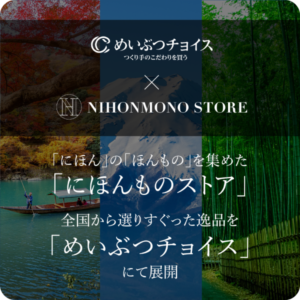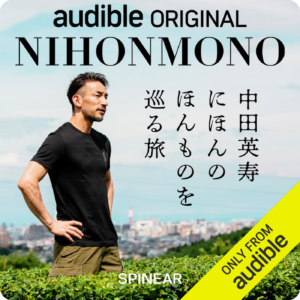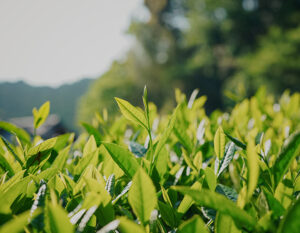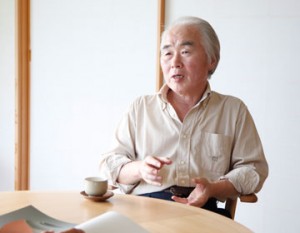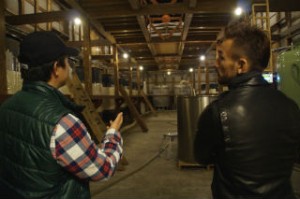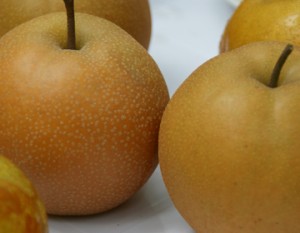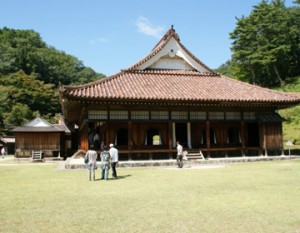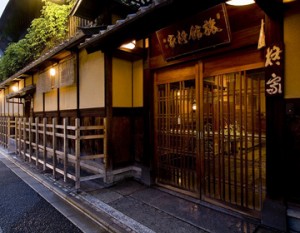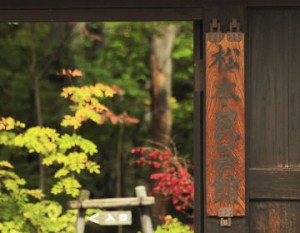Chiba Prefecture, the birthplace of pears in Japan, is number one in Japan in terms of cultivation area, harvest volume (production volume), and production value. Another feature is the variety of varieties that can be eaten depending on the season. Nashiya Yozaemon, which runs a pear farm in Ichikawa City, is particular about quality and seasonality. We got a glimpse into the cultivation of the ultimate pears, which pursues freshness, high sugar content, and a crunchy texture.
Chiba Prefecture’s pears are number one in Japan
When you think of agricultural products in Chiba Prefecture, peanuts may be the first thing that comes to mind, but it is also the number one producer of pears in Japan. According to the “National Position of Chiba Prefecture’s Pears” created by Chiba Prefecture based on data from 2021, Chiba Prefecture ranks first (production value 7.4 billion yen, harvest volume 20,500 tons, cultivation area 1340 hectares), Ibaraki Prefecture (production value 6.9 billion yen, harvest volume 19,100 tons, cultivation area 914 hectares), Tochigi Prefecture (production value 5.4 billion yen, harvest volume 15,900 tons, cultivation area 735 hectares), Tottori Prefecture (production value 5.1 billion yen, harvest volume 11,100 tons, cultivation area 618 hectares), and Nagano Prefecture (production value 4.8 billion yen, harvest volume 12,000 tons, cultivation area 664 hectares), ranking first in the nation. By the way, in the production statistics from 2002 to 2022, Chiba Prefecture has always ranked first, except for one time in 2019, when it lost the top spot to Ibaraki Prefecture. Because of the warm climate surrounded by the sea on three sides, the flowers bloom and the harvest season is early in the Kanto region. It is a suitable place for cultivating pears, blessed with favorable soil and weather conditions. In addition, since the consumption areas are close, mainly in the metropolitan area, freshly harvested pears can be delivered to consumers.
Chiba Prefecture has a long history of pear cultivation, dating back to the Edo period. It is said that it was spread by Zenroku Kawakami in 1769 in what is now the Yahata district of Ichikawa City, and the pears harvested in this area were transported to Edo and were highly praised as luxury goods, so the northwestern part of Chiba Prefecture became a major production area in the Kanto Plain.
Among them, Yosaemon is a long-established farmer in Chiba Prefecture that has been in business for over 200 years and has been growing pears for over 60 years. Tanaka Sokichi, the eighth generation owner, told us, “Chiba Prefecture has fertile soil known as the Kanto Loam layer, so no matter what variety we grow, we can produce a good one. The best part is that it’s surrounded by the sea on three sides, so the temperature is stable, which is probably good for pears too.”
Deepening confidence as the eighth generation of “Yosaemon”

Tanaka took on the title of “Yosaemon” as the eighth generation owner at the age of 27. Since childhood, he never helped with the family business. He thought “farming is shameful and uncool” and never even set foot on a farm during his adolescence. He had a vague idea in the back of his mind that he would “take over the family business someday,” but after graduating from Tokyo University of Agriculture, he got a job at an agricultural chemical manufacturer. As he got used to his job as a salesman, a turning point came when he interacted with producers. He had more opportunities to meet face to face and talk face to face. His thoughts changed, and he came to realize that “(agriculture) is a job with more depth than I thought, including valuing local food.”
However, although he majored in fruit trees at the Faculty of Agriculture in university, when he actually went out to the fields, things often didn’t go as planned, unlike in class. His father, Tanaka Akiyuki, the seventh generation owner, gave him one piece of advice: “Take a bite (of the pear).”
At the time, regular customers would tell him that the taste was different from before, and he was overcome with a sense of sadness that he had nowhere to go. But as he took great care in preparing the soil and managing the fields, and continued to try and error to improve the taste and quality, more and more customers began to say that the pears were delicious. “I’m glad I kept going. Everyone’s praise was encouraging,” said Tanaka.
Then in 2010, Tanaka won the Minister of Agriculture, Forestry and Fisheries Award at the Chiba Prefecture Pear Taste Contest. His pear cultivation was recognized in Chiba Prefecture, the “kingdom of pears.” As he gained confidence as the eighth generation owner of Yosaemon, he began his days working with pears.
Passion for Pear Growing

Yosaemon’s fields are located in Ichikawa City and Tomisato City, where Tanaka lives. Although Ichikawa City and other areas in the Tokatsu region of Chiba Prefecture are the birthplace of fertilizer, as residential development progresses, the smell and dust from the compost becomes a nuisance to neighbors, and farmland has become smaller due to plans for large roads, so about 35 years ago, when he established a farm in Tomisato City, he focused on creating the soil that would serve as the foundation for his fields.
At that time, he used chicken manure as compost, mixing it with coffee grounds to create heat, but now he ferments horse manure and straw bedding from the JRA Miho Training Center.
This is because chicken manure contains a lot of nitrogen, phosphorus, potassium, and other nutrients, making it a fast-acting fertilizer, but it also contains a lot of ammonia, which can have a negative effect on the roots if used continuously. On the other hand, the horse manure collected from the JRA Miho Training Center contains a large amount of straw used for stable bedding, and is characterized by its high plant-based organic matter content. This activates the soil microorganisms, and the soil improvement effect is very high. “I always use fertilizer. I try to design the fertilizer so that the pear trees can absorb it when they want to,” says Tanaka. As proof of this, the yield has not decreased, but rather increased.
Tanaka’s approach to farming has also changed. He now thinks about pears all the time, such as irrigating from spring to autumn and managing green branches, in order to suit the characteristics of each pear tree. “However, I still can’t touch insects (laughs). But at some point, I started to think that I wanted to be under the pear trees in the pear orchard, even if it was just for a day, an hour, or even a minute.” This is probably what moves Tanaka’s heart when he hears the voices of consumers saying how delicious the pears are.
Brings the autumn breeze to your mouth. Original varieties are also popular.
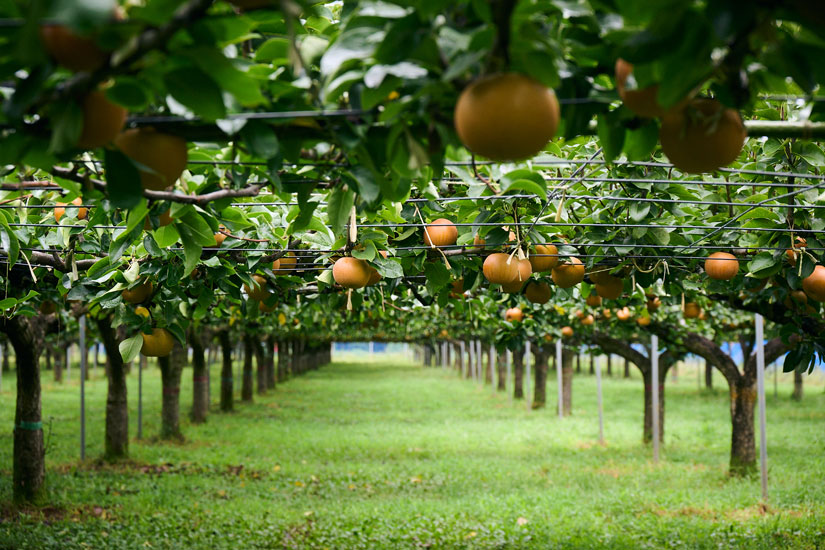
At Yosaemon, varieties such as Kosui, Hosui, Akizuki, Shinko, Kaori, and Oshu are cultivated. Selection of varieties is important in order to maintain the field area. The unique training method devised by the seventh generation owner allows the branches to be spaced widely apart, allowing light to reach each leaf, resulting in large, heavy, and juicy fruits. Normally, the water is drained during the harvest season, but here, irrigation is done throughout the year, which also leads to improved quality.
Tanaka has been working on improving varieties for about 10 years, cultivating Yosaemon’s original pears and selling them for the past three years. The original pears have a good reputation for being delicious, and there are many inquiries from consumers, but since there is only one original tree in the field, the yield is naturally limited. Currently, they are increasing the number of pears by grafting, and we look forward to many consumers receiving delicious pears as the original pear tree grows.
Enjoy it all year round
Generally, pears are harvested from August to early October, but depending on the variety and processed products, they can now be traded throughout the year.
They are particularly focusing on the “Oshu” variety, which starts coming out in October. It is a variety that keeps well and can be eaten until February of the following year if stored in the refrigerator. The slight sourness deepens in sweetness and sugar content as it is stored. “The sourness fades just enough, giving it an exquisite taste.” The high potential of “being delicious twice in one go” is the mainstay of sales.
And “Although pears are generally thought of as something to eat raw, we started making processed pear products about 10 years ago,” says Tanaka. Wanting to change the current situation where it is believed that pear cultivation alone is not enough to make a living, they are not only selling fresh produce, but are also trying to make processed products that can be sold all year round. Yosaemon’s pear brand, including “Arino Bi Confiture,” which won the gold medal in the direct sales category at the “Food Chiba Ippin wo Hakkutsu 2019,” 100% juice, jelly, dried fruit, and vinegar, are delivered all over the country.
The production of these processed products makes effective use of pears that do not meet Yosaemon’s unique standards, as well as fruit that is in the fourth or fifth year since planting, and is also a measure to reduce food waste.
Fusion of cutting-edge technology and tradition
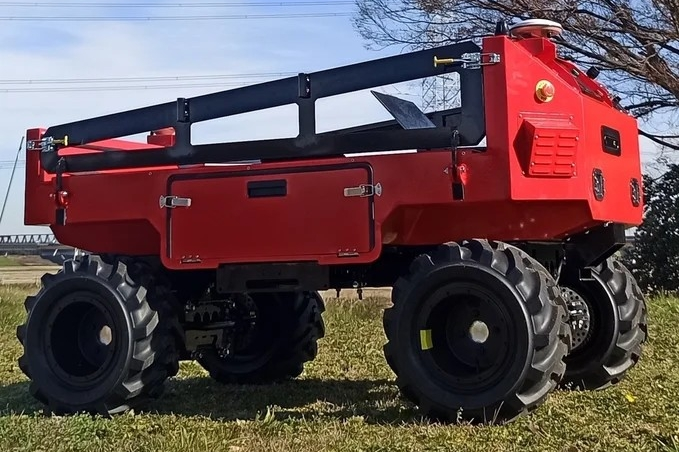
In 2025, the company plans to introduce the AI robot “Adam” developed by Kisui TECK, which is also based in Kashiwa City, Chiba Prefecture. The company is an agritech startup founded by Bloom Tamir, who studied robotics at UCLA and has been researching the application of reinforcement learning and AI technology for lunar rovers and exploration robots at the Space Robotics Laboratory at Tohoku University. The company is developing and deploying automated agricultural robots using its own knowledge and know-how to solve the problems faced by Japanese farmers.
Tanaka, who was originally concerned about the chronic labor shortage of farmers, has volunteered to become a role model for solving the problem by introducing this robot.
Adam is an electric transport robot with a loading platform of approximately 146 cm x 111 cm that can be driven autonomously, and can carry 12 harvesting containers of 20 kg. With the push of a button, it automatically travels between two points saved on a map, so harvested pears can be moved from the farm to the sorting area or shipping area without human intervention.
In addition, since the AI can visually follow the worker, it is expected to be very useful in situations such as collecting branches, pruning, and spreading fertilizer. If the introduction of such equipment progresses in the future, the labor shortage on farms will likely be alleviated all at once.
Of course, it would be better if more people started farming, but we cannot expect too much. In that case, Tanaka believes that the option of “introducing cutting-edge technology to protect traditions” is also necessary.
A long-established farm that continues to evolve
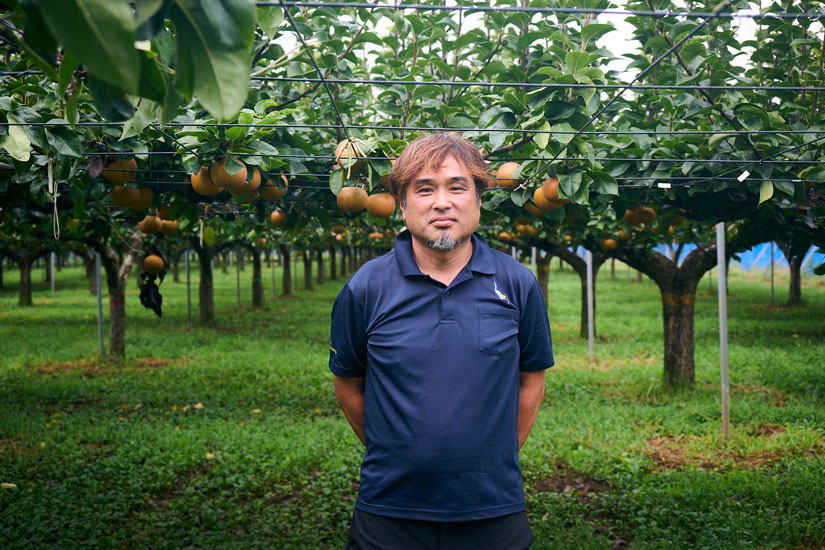
Recently, there have been concerns about fluctuations in flowering, harvest seasons, and fruit quality due to the effects of global warming, but Tanaka says confidently, “Although some aspects are influenced by the environment, I don’t want to blame it on the environment. That would just mean that I haven’t put in the effort. I want to be able to make better pears, and offer them so that many people will say that Yosaemon pears are the only ones they can get.”
With an eye on the future of pears, Tanaka aims to make pears that many people will say are delicious. His work to make the finest pears is still on.
